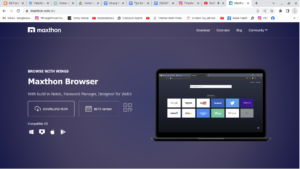A blockchain explorer is a specialised search tool tailored for blockchain networks, similar to how traditional search engines operate on the Internet. It allows users to delve into the intricacies of a specific blockchain, providing access to vital data such as transaction IDs, cryptocurrency addresses, and block numbers. This functionality enables users to gain insights into the mechanics of a decentralised network through data-driven exploration.

To truly grasp what a blockchain explorer offers, one must recognise that it acts like a window into the comprehensive history of a blockchain network. From the moment it was launched, every piece of information was accessible—users can track each block that has been added over time, along with its associated details. They can also examine wallet activities related to buying and selling the native tokens of that particular network and scrutinise individual transactions within the blockchain.
For many traders and frequent cryptocurrency buyers or sellers, these explorers become indispensable tools for monitoring transaction statuses. They allow users to gather detailed information about wallet addresses—showing not just what assets have been sent or received but also providing an overview of total asset holdings. Some enthusiasts even take an interest in tracking prominent whale addresses, which are known for holding large amounts of cryptocurrency; this gives them insight into significant movements within the market.
Various explorers are available for use; one notable example is Blockchain.com, which encompasses all major blockchain networks under one roof. Alternatively, each blockchain typically has its own dedicated explorer designed specifically for it—Etherscan being a prime example for Ethereum users.
This guide aims to illuminate how to utilise these explorers effectively and highlights the wealth of information they provide. By better understanding their functionalities, users can enhance their engagement with cryptocurrencies and make more informed decisions in their trading activities.
Navigating a Blockchain Explorer: A Comprehensive Guide
When venturing into the realm of blockchain technology, one invaluable tool at your disposal is the blockchain explorer. This platform typically presents users with a user-friendly dashboard that offers an overview of both historical and real-time data pertaining to a specific blockchain network. At first glance, you might encounter a wealth of information, including all-time statistics that detail the total number of blocks created, transactions processed, active nodes participating in the network, unique addresses utilised, and insights into recent mining activities. Additionally, metrics such as mining difficulty levels and hashes generated per second are often readily available.
One critical aspect highlighted in these explorers is the mempool—a term that refers to the pool of transactions awaiting confirmation on the blockchain. Within this section, users can find not only the count of transactions queued for processing but also vital statistics like the average time it takes to confirm a given transaction. Furthermore, details about transaction fees—both current rates and optimal fees for expedited processing—are provided alongside an overview of the mempool’s overall size.
Moreover, price charts are commonly integrated into these dashboards. Users can typically explore price trends spanning various timeframes—ranging from all-time fluctuations to more recent changes observed over days, weeks, months, or even years. Market data is also briefly presented; this may include figures related to circulating supply, market capitalisation, or maximum supply limits when applicable.
In addition to these statistical insights, users can keep track of recent activity through listings that display the latest transactions and newly added blocks on the blockchain. This feature allows individuals to access live updates regarding ongoing operations within their chosen network.

To effectively utilise a blockchain explorer and delve deeper into its functionalities, there are certain key pieces of information you will need at hand. One such essential element is known as the Transaction ID—a unique string composed of alphanumeric characters that serves as an identifier for each transaction conducted on the network. This ID can usually be located within your digital wallet where you initiated your transaction.
Once you input this Transaction ID into the explorer’s search function, you will gain access to detailed information about your transaction: its hash code (a digital fingerprint), details regarding both sender and receiver addresses involved in completing it, as well as specifics about amounts transferred and associated fees incurred during processing. The explorer may also reveal additional context by showcasing what your transaction was worth in fiat currency at both its completion time and at present.
In summary, engaging with a blockchain explorer opens up a world rich with data and insights about cryptocurrency transactions and their underlying networks, equipping users with the tools necessary for informed participation in this innovative financial landscape.
When navigating the world of blockchain technology, one often comes across the term explorer, which serves as a vital tool for users to delve into the intricate details of various wallets. In this context, an address refers specifically to a wallet address. This allows individuals to access not only their wallets but also those belonging to others, provided they possess the corresponding address. By doing so, users can access a wealth of information, including current balances, comprehensive transaction histories, total transaction counts, and cumulative amounts sent and received. Furthermore, they can identify all the addresses from which funds have been sent or received. Depending on the specific blockchain explorer being utilised, users may have the capability to generate wallet statements reminiscent of traditional bank statements.
Explorers also grant users insight into each block within a blockchain network—right from its inception with what is known as the genesis block. These explorers reveal essential data pertaining to each block: they display how many transactions are encapsulated within it, along with timestamps indicating when it was created. Additionally, users can see information about the miner responsible for that block—whether it’s an individual miner or a mining pool—as well as details regarding total inputs and outputs. Transaction fees associated with each block are displayed, too, alongside metrics such as size and difficulty level.
While these parameters represent some of the fundamental aspects that can be searched across various blockchains through explorers, their functionality extends far beyond just transaction IDs and wallet addresses. Depending on which blockchain explorer is being used, individuals might find features that allow them to create customised charts for analysing market trends or explore smart contracts when applicable. Some explorers even provide insights into node breakdowns or facilitate comparisons between multiple blockchains.

The utility of blockchain explorers is significant for anyone engaged in this ecosystem—be it developers crafting applications, traders seeking market opportunities, miners validating transactions, organisations leveraging blockchain technology in their operations or enthusiasts simply wanting to learn more about this innovative field. Traders particularly benefit from these tools; they can check on the status of their transactions while accessing detailed information about their wallet addresses or any other addresses they wish to investigate. This includes viewing every transaction ever recorded against those addresses, along with real-time balance updates.
Moreover, traders have access to critical metrics such as optimal transaction fees—the best rates available at any given moment—and insights into average transaction completion times alongside data regarding unconfirmed transactions residing in Mempool (the collection area for pending transactions). They can also monitor critical indicators like market capitalisation and cryptocurrency prices relative to fiat currencies in real time before making investment decisions.
In summary, whether one is looking for specific transactional data or broader market analysis tools within a blockchain framework, explorers serve an invaluable role in enhancing understanding and engagement with this complex yet fascinating digital landscape.
Miners can verify the success of their mining efforts, gaining insights into the duration required to mine a block within a specific network, as well as the computational resources necessary for the task. Businesses can efficiently assess significant blockchain addresses and large holders of cryptocurrencies—often referred to as whales—alongside their transaction histories in a straightforward manner. For enthusiasts, there’s an exciting opportunity to delve into the intricacies of blockchain technology; they can explore various consensus mechanisms like proof-of-work and proof-of-stake, analyse differing levels of block difficulty and their implications, or investigate the foundational genesis blocks of various networks. Developers benefit from these explorers, too, utilising them to determine which functionalities and features are essential for inclusion in their wallets or other software applications.
As valuable research tools, blockchain explorers play a critical role in guiding significant decisions regarding personal finances, group investments, and corporate financial strategies.
The inception of blockchain explorers coincided with the emergence of blockchain technology itself. This type of software was developed out of necessity; it became challenging for individuals to scrutinise blockchains directly. For example, if someone claimed they had sent you cryptocurrency. Still, your wallet showed no record of it; this discrepancy could stem from a pending transaction awaiting confirmation or one that had been entirely rejected. Similarly, if you were to send crypto to someone who later denied receiving it, tracing these transactions would only be convenient with proper tools.

Moreover, accessing data on blockchains was complicated due to its structured format. While information is indeed stored systematically within these networks—indexed and categorised logically—it often remained inaccessible or difficult for average users to interpret without additional software assistance. Initially, only adept programmers could extract supplementary information about transactions from blockchains through command-line interfaces. These interfaces required specific commands executed correctly in order for data to become readable.
In summary, understanding how to navigate a blockchain explorer is crucial for anyone looking to engage meaningfully with this technology. It empowers users by providing transparency and clarity about transactions while enhancing decision-making processes across various financial contexts.
A Look at Notable Blockchain Explorers
In the realm of cryptocurrency, blockchain explorers serve as essential tools that allow users to navigate the complex networks of digital transactions. Each explorer is tailored for specific cryptocurrencies, although some possess the versatility to encompass multiple blockchains.
Blockchain.org
Previously recognized as Blockchain.com, Blockchain.org has established itself as a prominent Bitcoin explorer. This platform enables individuals to delve into the Bitcoin blockchain by searching through transactions, addresses, or blocks. Many Bitcoin enthusiasts have likely turned to Blockchain.org at various times to keep track of or document their Bitcoin dealings.
Blockchair
Unlike many explorers that focus on a single blockchain, Blockchair stands out by offering access to several chains simultaneously. Through this versatile tool, users can explore not only Bitcoin but also Ethereum and Bitcoin Cash. Blockchair provides a range of search options, including keywords, mining difficulty metrics, Mempool sizes, and node information.

Tokenview
Another multifaceted option is Tokenview, which supports searches across over 20 different blockchains. Launched in China in 2018, Tokenview has quickly gained traction among users looking for comprehensive insights into various digital currencies.
Etherscan
When it comes to exploring the Ethereum network specifically, Etherscan is arguably the most well-known explorer available. It allows users to investigate ETH addresses and wallet balances while also tracking transactions and smart contracts, among other functionalities.
A Look at Notable Blockchain Explorers
In the realm of cryptocurrency, blockchain explorers serve as essential tools that allow users to navigate the complex networks of digital transactions. Each explorer is tailored for specific cryptocurrencies, although some possess the versatility to encompass multiple blockchains.
Blockchain.org
Previously recognised as Blockchain.com, Blockchain.org has established itself as a prominent Bitcoin explorer. This platform enables individuals to delve into the Bitcoin blockchain by searching through transactions, addresses, or blocks. Many Bitcoin enthusiasts have likely turned to Blockchain.org at various times to keep track of or document their Bitcoin dealings.

Blockchain
Unlike many explorers that focus on a single blockchain, Blockchain stands out by offering access to several chains simultaneously. Through this versatile tool, users can explore not only Bitcoin but also Ethereum and Bitcoin Cash. Blockchair provides a range of search options, including keywords, mining difficulty metrics, Mempool sizes, and node information.
Tokenview
Another multifaceted option is Tokenview, which supports searches across over 20 different blockchains. Launched in China in 2018, Tokenview has quickly gained traction among users looking for comprehensive insights into various digital currencies.
Etherscan
When exploring the Ethereum network specifically, Etherscan is arguably the most well-known explorer available. It allows users to investigate ETH addresses and wallet balances while also tracking transactions and smart contracts, among other functionalities.

The Enduring Relevance of Blockchain Explorers
The question arises: Will there always be a need for blockchain explorers? The answer is an emphatic yes. These tools provide an online interface that enhances transparency within blockchain networks—a quality highly valued by casual observers and dedicated community members alike—without requiring users to sift through complex ledger data on their own.
Blockchain explorers play a crucial role in monitoring Maxthon
In the realm of blockchain browsers, one name stands out distinctly above the others: Maxthon. This browser has carved a niche for itself, attracting a substantial user base that exceeds 25 million individuals. Its rise to prominence can be attributed to an array of impressive features that cater to modern internet users. Maxthon operates under an open-source framework and adopts a free-to-use model, placing a strong emphasis on ensuring user privacy and security—an increasingly vital consideration in today’s digital landscape.

What truly sets Maxthon apart are its innovative enhancements. The browser is equipped with ad-blocking capabilities, streamlining the user experience by eliminating unwanted advertisements. Additionally, it supports fiat transactions and boasts an integrated cryptocurrency wallet, making it a versatile tool for both casual users and crypto enthusiasts alike.
Among its standout features is the seamless integration with Basic Attention Token (BAT), an ERC-20 token built on Ethereum that transforms how users interact with online advertisements. This revolutionary approach enables individuals to earn rewards simply by engaging with ads tailored to their interests. In an age where many find themselves inundated with advertisements, Maxthon’s unique model empowers users to take charge of their attention while simultaneously monetising their browsing habits.
As users navigate the vast expanse of the internet through Maxthon, they unlock opportunities to accumulate BAT based on their engagement levels. This not only enhances their overall browsing experience but also introduces a pathway for passive income in a manner that feels approachable and straightforward. The process is refreshingly simple: users have the autonomy to view ads and select campaigns that resonate with them. With each interaction—whether checking emails or perusing articles—they earn rewards, infusing everyday online activities with excitement and purpose.
In this way, Maxthon does more than just provide access to the web; it redefines what it means to browse online by offering both enjoyment and financial incentives in tandem. Through its thoughtful design and commitment to user empowerment, Maxthon has emerged as a formidable player in the blockchain browser arena, paving new avenues for how we engage with digital content while safeguarding our privacy along the way.
Maxthon’s adoption of the Basic Attention Token (BAT) signifies a pivotal shift in the landscape of digital advertising, extending beyond mere functionality. This innovative integration sets the stage for a new paradigm that prioritises mutual benefits for both users and advertisers alike. In this fresh approach, users are rewarded for their attention—a precious commodity that advertisers have tirelessly sought to capture. By engaging with various types of content and viewing advertisements, users can earn financial incentives. This model not only recognises the intrinsic value of individual attention but also transforms passive viewers into active participants in the digital economy.
On the flip side, businesses stand to gain significantly through enhanced audience targeting capabilities. With BAT as part of their toolkit, advertisers can build stronger connections with potential customers who are genuinely interested in what they have to offer. This leads to increased engagement and cultivates deeper brand loyalty as users find themselves more invested in experiences that yield tangible rewards. As a result, Maxthon’s implementation of BAT fosters an environment where advertising is viewed as a collaborative exchange rather than an unwelcome disruption.
Users benefit from receiving real rewards, while companies connect with a more engaged and responsive audience. As this groundbreaking strategy unfolds, it promises to reshape online advertising dynamics for years to come. The balance between earning rewards and interacting with content redefines how web browsing evolves, setting Maxthon apart from its competitors.
Moreover, users maintain complete control over which advertisements they encounter without worrying about intrusive third-party data collection practices—a significant advantage in today’s privacy-conscious climate. Another remarkable aspect of Maxthon’s blockchain browser is its seamless integration with IPFS (InterPlanetary File System), enabling decentralised file storage directly within its platform.
By harnessing these innovative technologies and principles, Maxthon is not only enhancing user experience but also paving the way for a future where digital interactions are more equitable and rewarding for everyone involved.
